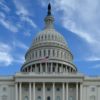Safe & Healthy Colorado, self-described as a grassroots, volunteer-led coalition of Coloradans working toward a safer and healthier future, announced a campaign advocating for decreasing oil and gas production in the state.
The campaign, known as #FrackingFuelstheFlames, addresses the role of oil and gas fracking in making wildfires larger and more destructive, as well as contributing to the climate crisis at large by emitting toxic pollutants into the atmosphere.
The coalition is working towards a just transition to clean energy to ensure the health and safety of all Colorado residents. To do so, Safe & Healthy Colorado is calling for an immediate reduction in fracking during ozone season and in heavily polluted areas, alongside legislation to phase out all new fracking permits by 2030.
Coloradans can get involved with the campaign by signing a petition urging Gov. Jared Polis (D-CO), the Regional Air Quality Council, the Colorado Oil and Gas Conservation Commission, and the Air Quality Control Commission to take action on ozone here.
Safe & Healthy Colorado has also drafted an open letter of support for the phase-out of new oil and gas permits and a just transition to clean, renewable energy that residents can sign here.
The campaign video for #FrackingFuelstheFlames is available here.
The open letter addresses the risks associated with fracking, which include the release of harmful pollutants, including toxic chemicals, ozone precursors, carbon dioxide, and methane into the atmosphere. The letter also includes data that shows the staggering financial cost the climate crisis has already incurred, with the state paying between $20 billion and $50 billion in climate-related disasters since 1980, with most damages occurring after 2010.
According to Safe & Healthy Colorado, the state’s primary contribution to the climate crisis is its emissions from oil and gas production and combustion. These pollutants have been shown to lead to ‘severe’ air quality violations along the Front Range in addition to increased risks of birth defects, cancer, and lung disease for fenceline communities that are exposed to these toxic emissions.
350 Colorado Action President Bobbie Mooney addressed the urgency to cut emissions and lower ozone levels across the state in a statement released alongside the campaign announcement.
“We have F-grade air quality approaching severe ozone nonattainment, as the polluting industries releasing GHG (greenhouse gas) emissions are also releasing toxic chemicals into disproportionately impacted communities, whose health and wellbeing are suffering terribly,” Mooney said. “It’s time for Gov. Polis and other state leaders to say ‘enough’ and require state regulators to do their jobs and create the needed regulations to rapidly cut all of these emissions. We need a ‘moonshot’ effort to ramp up renewables and transition off fossil fuels as rapidly as possible.”
Ozone nonattainment, referenced by Mooney, is defined by the EPA as “any area that does not meet (or that contributes to ambient air quality in a nearby area that does not meet) the national primary or secondary ambient air quality standard for a NAAQS.”
The EPA established National Ambient Air Quality Standards (NAAQS) for several air pollutants, including ozone in 1971. Using this standard, the Denver Metropolitan Area was designated as nonattainment in 1978 until it met an EPA-approved 1-hour Ozone State Implementation Plan (SIP) in 1983.
Under the current 8-hour ozone classifications, an area designated as marginal has a value of 0.071 up to 0.081 ppm, while an area designated as extreme has a value of 0.163 ppm and above.
In January 2020, the EPA designated the Denver Metro area once again as a “serious” nonattainment area under its modified 2008 ozone standard. The deadline to achieve attainment was July 20, 2021.
The latest report from the Intergovernmental Panel on Climate Change assessed with “high confidence” that anthropogenic, or human-caused, climate change has directly led to increased wildfires and drought, as well as the aridification of the southwestern United States.
A bipartisan poll released earlier this year found that 82% of Colorado residents regard climate change as a serious problem, and were the most likely across all western states to say they are concerned about extreme weather events being exacerbated by climate change. Nearly all Coloradans responded that wildfires that threaten homes and property are a serious problem faced by the state.
According to a report issued by the National Interagency Fire Center on November 11, over 45,547 acres of land in Colorado have been burned by the 826 wildland fires in the past year. Pollutants from wildfire smoke and oil and gas have increased smog across Colorado, with the summer of 2021 marking the worst air quality the state had seen in over a decade and a spike in ground-level ozone levels.
Safe & Healthy Colorado is one among dozens of environmental and community groups pushing legislation to reduce greenhouse gas emissions and encouraging Governor Jared Polis to take immediate action on the climate crisis and declare a climate emergency.



